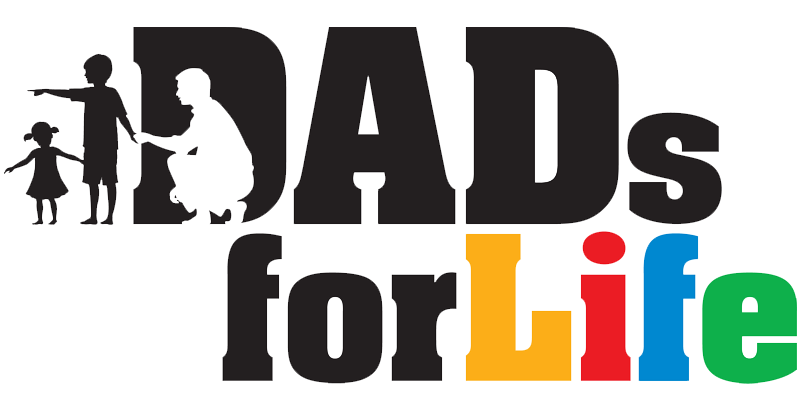
Dr. Neil Bernstein is a practicing clinical psychologist, author, and speaker based in Washington, DC. He is an accomplished fathering expert who has spent over twenty five years guiding dads, teenagers and their families through difficult times. In his book There When He Needs You: How to Be an Available, Involved, and Emotionally Connected Father to Your Son, Bernstein draws on his years of experience to explore what he terms the father trap—men who are drawn to fatherhood by their desire to out-father their own dads after they become parents, only to realize that they have no idea how to go about breaking free from old habitual patterns.
Bernstein’s writing tone is entertaining, inspirational, warm, down-to-earth and honest, and his book is interspersed with humane and compelling stories of sons and fathers who have successfully worked through their conflicts and tensions. Bernstein examines a broad range of fatherhood issues, from explaining how new dads have to confront the legacy of their own ambivalent feelings about their own fathers, exploring how savvy moms can promote good fathers, to detailing specific ways to get involved in sons’ lives.
Bernstein’s opening chapter A Dad is Not a Male Mother outlines how modern dads have moved away from old stereotypes and increasingly recognise the importance of cultivating “emotive, expressive, and intuitive aspect of caring for another family member, including their own sons” (7). Men these days are less likely to engage “cavemenlike behaviours” such as “[grunting] or [gesticulating] their feelings” and telling their sons to “suck it up” if problems arise (7).
Despite making great progress since the days where emotion was viewed with suspicion and hostility, these fathers still find themselves not performing up to their own expectations – or the expectations of their wives and sons. Bernstein attributes this phenomenon to the difficulties dads face in playing all their prescribed roles – those of successful career men, attentive husbands, model citizens and most of all, loving fathers. Bernstein implores dads to abandon the false idea that they need to be perfect to be a good father; in his view, “there’s no such thing as the dad who thinks of everything, gives everything, sacrifices everything, succeeds at everything” (24). Bernstein proposes that dads take a moderate rather than black-or-white approach, and strive to be a “good-enough-dad” who “finds balance between being there for his son and nourishing his own spirit” (24).
In Chapter 4, What Dads Won’t Say, which is perhaps one of the most poignant chapters in the book, Berstein sheds light on “a father’s heart, a complex tangle of emotions shielded by pride and restraint” (95). Bernstein documents how many men tend to fall prey to adopting the usual cliché of “everything is fine” even though the problems in their life appear to be palpable. Bernstein acknowledges that during the therapy sessions with him, dads initially find talking about their issues to be strange, fake and uncomfortable.
Nevertheless, these fathers gradually open and warm up, divulging their deepest fears, anxieties and insecurities. Bernstein includes anecdotal segments entitled My son is closer to my wife than he is to me, I’m a closet chauvinist and don’t know if I can change, I’ve hurt my son more than I’ve helped him, and I don’t want my son to be like me to illustrate some common themes dads experience. He gently encourages fathers to fight their fears by practising strategies such as self-compassion, challenging negative thoughts, setting realistic expectations, and learning to leave past guilt behind by living in the present. The key message Bernstein conveys to fathers is that it is normal and natural to make mistakes; what matters most is for dads to own up to things that they are not proud of and be solution-focused.
Chapter 5, Sons Speak Out, which is yet another moving and insightful chapter in the book, gives a voice to the sons who have been hurt and disappointed by their dads. Bernstein reveals a common thread running through the sons’ stories: their “yearning for their fathers’ respect” and their “need to feel empowered in their relationship with [fathers]” (138). He urges fathers to make it easy for their sons to share their feelings by reaching out, dedicating one-on-one time to them and being emotionally available. By offering dads a glimpse into struggles and frustrations that sons experience, Bernstein inspires dads to reflect more on how their behaviour affects their sons and change those destructive behaviours that are undermining father-son intimacy.
Bernstein concludes his book with a chapter on Top Ten Fathering Tips, emphasizing the importance of dads striking a comfortable balance between career and family, being emotionally open and expressive and acknowledging their own shortcomings. He also advises dads to consistently monitor their own progress by checking in with loved ones on how they are doing and truly taking their feedback to heart. Bernstein’s book, in its readily accessible wisdom, will undoubtedly enhance the lives of all dads who read it, and also the children and wives whom their lives are intertwined with.
This book is also available at Singapore public libraries.
About the Author: The Dads for Life Resource Team comprises local content writers and experts, including psychologists, counsellors, educators and social service professionals, dedicated to developing useful resources for dads.
